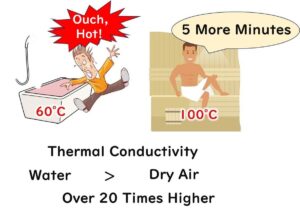Heat sterilisation of food
Explore the science and techniques behind heat sterilisation in food processing. Learn about pasteurisation, sterilisation temperatures, D-values, Z-values, and their significance in ensuring food safety and extending shelf life. Perfect for professionals in the food industry and microbiology enthusiasts.
The Relationship between Water Activity in Food and Microbial Heat Resistance During Heat Sterilisation
Low water activity in food increases microbial heat resistance during heat sterilization, making careful heating of these foods crucial. How much does microbial heat resistance increase as water activity decreases? This article summarizes the impact of water activity on microbial heat resistance in foods.
Defeating Botulinum Spores: The Science Behind Retort Sterilization at 121.1°C
Discover the rigorous science of retort sterilization, a pivotal technique in food safety that neutralizes the formidable spores of Clostridium botulinum at 121.1°C . This article explores the 'Botulinum cook' method, a specialized heat treatment that ensures the reduction of these dangerous spores in packaged foods, allowing for safe room temperature distribution. Join us as we unravel the balance between achieving maximum sterilization efficacy and preserving the quality and flavor of food, crucial for preventing foodborne illnesses.
Food Heat Sterilization: Understanding and Applying Pasteurization, D Values, and Z Values
EHeat sterilization is a cornerstone of food safety, categorized into two key methods: pasteurization and retort sterilization. In this article, we dive into pasteurization, demystifying essential concepts like D values and Z values, and exploring their practical applications. From theory to practice, learn how these tools ensure effective and safe food sterilization.
Sterilisation of Food: Grasping the Basics of Heat Sterilisation
Ensuring the safety of food through heat sterilisation is crucial. This article explores the fundamentals of two common methods: moist heat sterilisation and dry heat sterilisation. We discuss their differing efficiencies against microbes, focusing on how environmental moisture influences sterilisation effectiveness and microbial survival. Additionally, we examine heat-resistant spore-forming microbes and the scientific reasons behind their resistance to standard sterilisation techniques, providing insights from microbiological principles to enhance the understanding of food sterilisation processes.



